Affiliate disclosure: This post may contain affiliate links. Please see our Privacy Policy.
Edible wild mushrooms are a delicious reason to spend time in the woods. While some types can be tricky, there are a number of wild mushrooms that are easy to identify. These tasty edible mushrooms are perfect for beginning mushroom foragers!
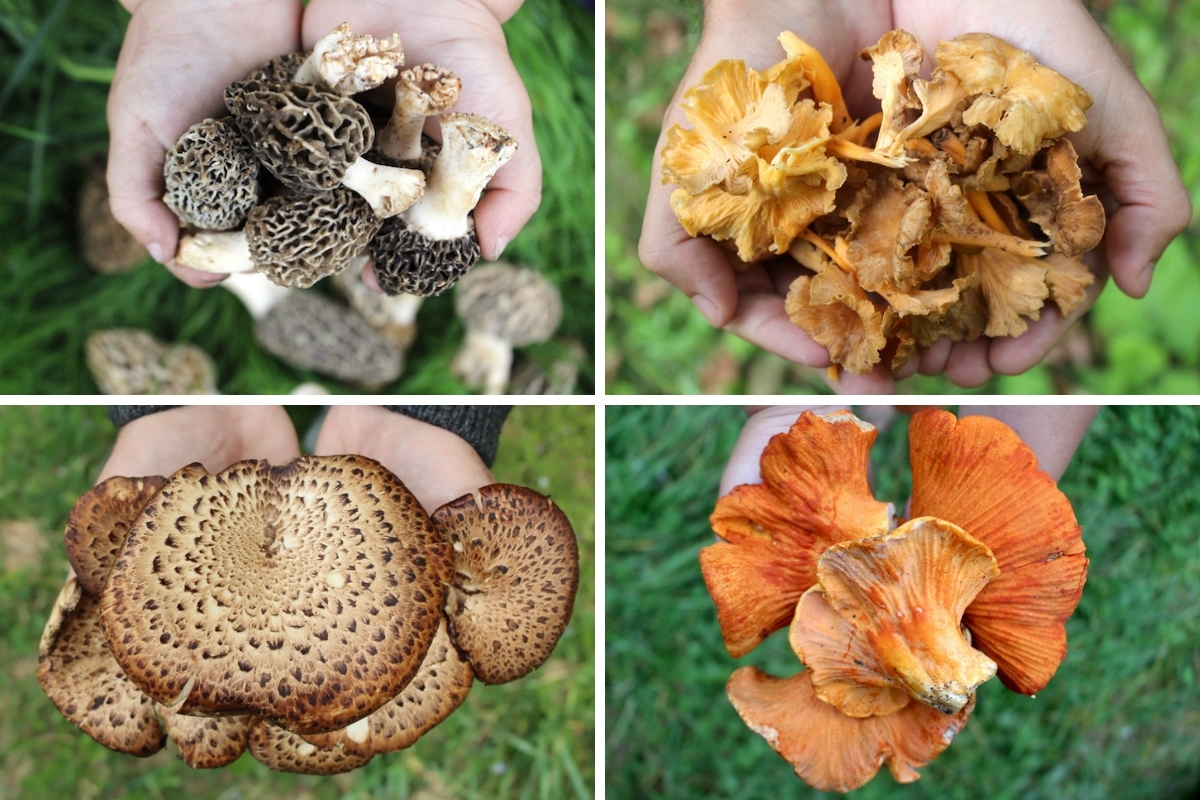
Table of Contents
- Edible Wild Mushrooms for Beginners
- Morel Mushrooms
- Pheasant Back Mushrooms
- Chanterelle Mushrooms
- Chicken of the Woods (Laetiporus sp.)
- Hen of the Woods (Grifola frondosa)
- Puffball Mushrooms (Calvatia sp.)
- Shaggy Mane Mushrooms (Coprinus comatus)
- Lion’s Mane Mushrooms (Hericium sp.)
- Bolete Mushrooms (Boletus sp.)
- Hedgehog Mushrooms (Hydnum repandum)
- Oyster Mushrooms (Pleurotus sp.)
- Lobster Mushrooms (Hypomyces lactifluorum)
- Winecap Mushrooms (Stropharia rugosoannulata)
- Witches Butter
- Medicinal Mushrooms
- Foraging Guides
Beginning mushroom foragers are often told to start with the “foolproof four,” or four types of mushrooms that are tasty supposedly incredibly easy to identify.
They include:
- Morels
- Chanterelles
- Chicken of the Woods
- Giant Puffballs
The thing is, both morels and chanterelles have toxic look-alikes, and I constantly see people posting huge harvests of look-alikes to mushroom forums bragging about their haul.
The look-alikes aren’t particularly close to the real thing mind you, and it takes a considerable feat of the imagination to misidentify them.
Nonetheless, people do it all the time. If you desperately want to see morels, you’ll see them. Whether they’re there or not is another matter.
Keep in mind that just because these are “easy to identify” it doesn’t mean you don’t have to do any work to positively ID them. That said, if you put in the time and verify their characteristics in the most basic way, you shouldn’t have a problem.
There are a lot more than four easy-to-identify mushrooms out in the woods. By my count, there are more than a dozen.
Some of them, such as pheasant backs and chicken of the woods mushrooms actually have no close look-alikes at all and are pretty hard to mess up.
(That doesn’t mean it’s not possible…still do your ID work.)
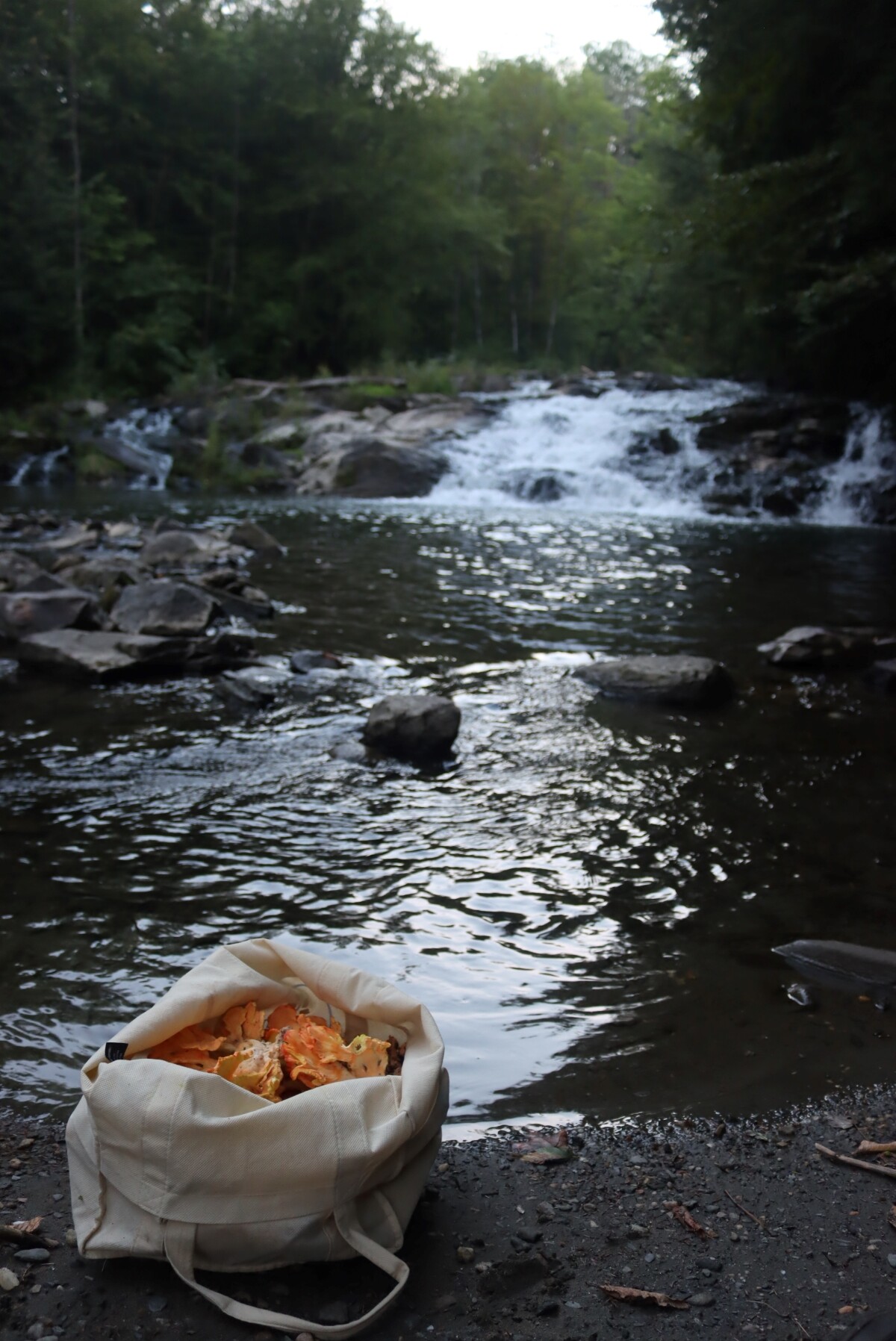
Edible Wild Mushrooms for Beginners
These are all easy to identify edible wild mushrooms, but in the immortal words of The Dude, “That’s just like, your opinion, man.” This is in fact, just my opinion, and I’d welcome your opinions/input in the comments.
- Morel Mushrooms (Morchella sp.)
- Pheasant back Mushrooms (Cerioporus squamosus)
- Chanterelles (Cantharellus sp.)
- Chicken of the Woods (Laetiporus sp.)
- Hen of the Woods (Grifola frondosa)
- Puffball Mushrooms (Calvatia sp.)
- Shaggy Mane Mushrooms (Coprinus comatus)
- Lion’s Mane Mushrooms (Hericium sp.)
- Boulette Mushrooms (Boletus sp.)
- Hedgehog Mushrooms (Hydnum repandum)
- Oyster Mushrooms (Pleurotus sp.)
- Lobster Mushrooms (Hypomyces lactifluorum)
- Winecap Mushrooms (Stropharia rugosoannulata)
- Witches Butter Mushrooms (Dacrymyces palmatus)
I’ll walk you through each type, along with pictures below.
Morel Mushrooms
One of the first mushrooms of spring, morels bring literally thousands of foragers to the woods each year.
They’re tricky to spot since they tend to blend in with the forest floor, but once you’ve spotted them they’re relatively easy to identify.
Even as an “easy to identify” wild mushroom, they still have four common look-alikes, some of which are toxic. I’d suggest reading this primer on identifying morel mushrooms before you get started.
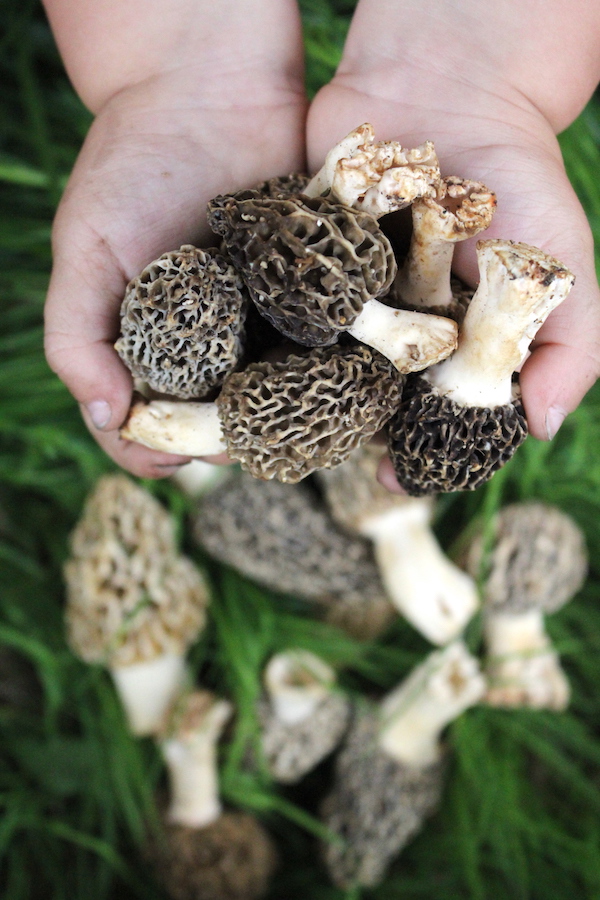
Most morel mushroom look-alikes can be eliminated simply by cutting the mushrooms in half. They should be completely hollow from the tip of the cap all the way down through the stem base. This alone eliminates most of the morel look-alikes.
Beyond that, check to make sure that the stem attachment is at the base of the cap, and is completely attached along the bottom ridge. (Not under the cap like a skirt or umbrella.)
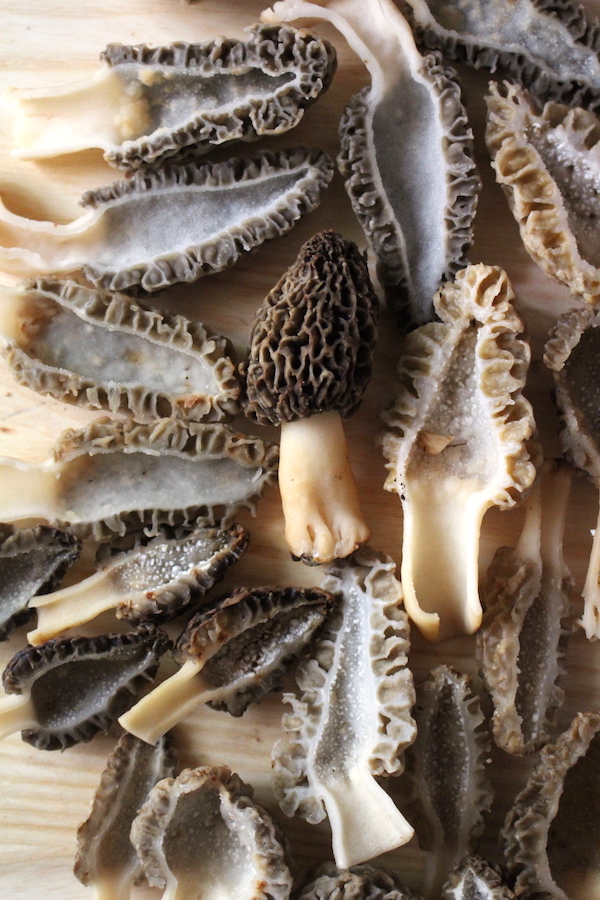
Pheasant Back Mushrooms
After morels, pheasant backs are another cool-season spring mushroom that appears just a few weeks later, usually a bit after last spring frost.
As you might imagine, pheasant back mushrooms have a patterning that looks like a pheasant’s back.
They’re also sometimes called “dryad’s saddle” because they usually jut out sideways from trees in the rough shape of a saddle. They can be quite large, big enough to ride if they wouldn’t immediately break off when you tried.
Once they’re large they can get tough, so it’s best to harvest them young.
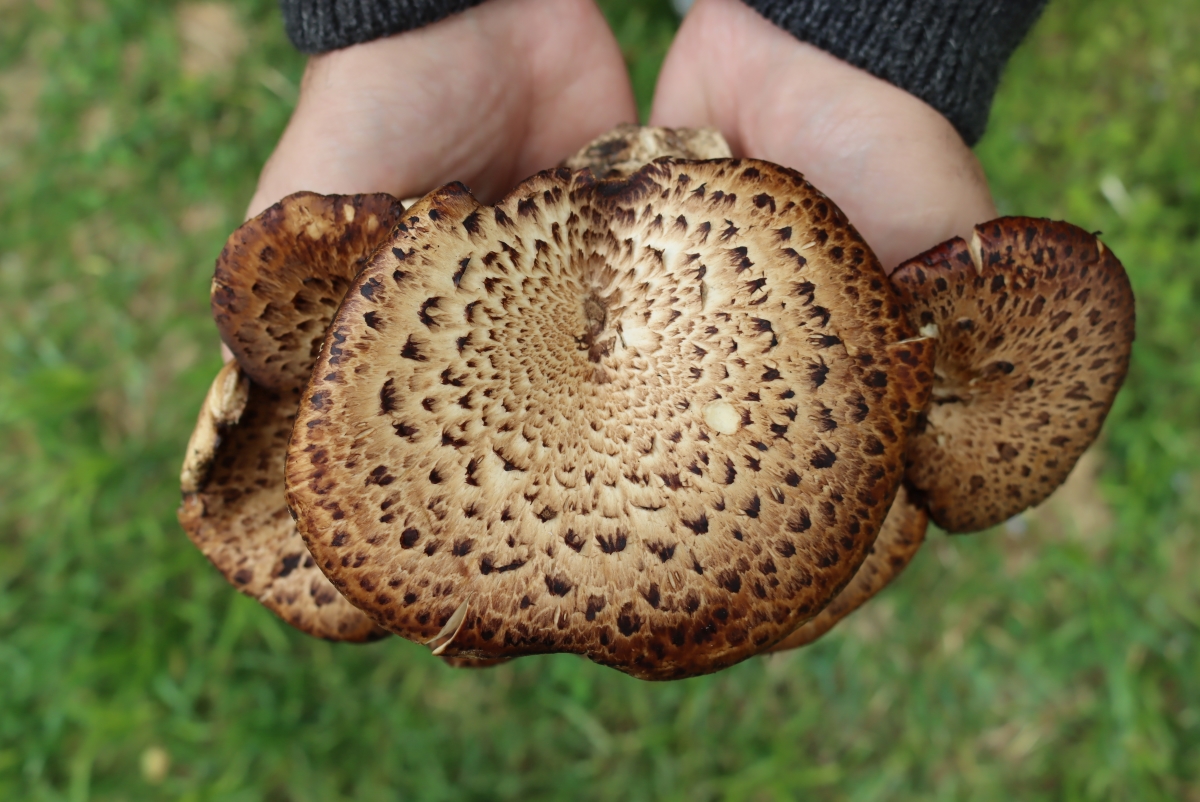
Pheasant back mushrooms are easy to identify, and they’re incredibly common.
They can be tricky to cook properly, and if you’ve tried them and not liked them, maybe they’re worth another try if you weren’t preparing them properly.
Ideally, they’re sliced very thin before cooking, and you only cook the small ones. (Larger ones can be made into mushroom broth.)
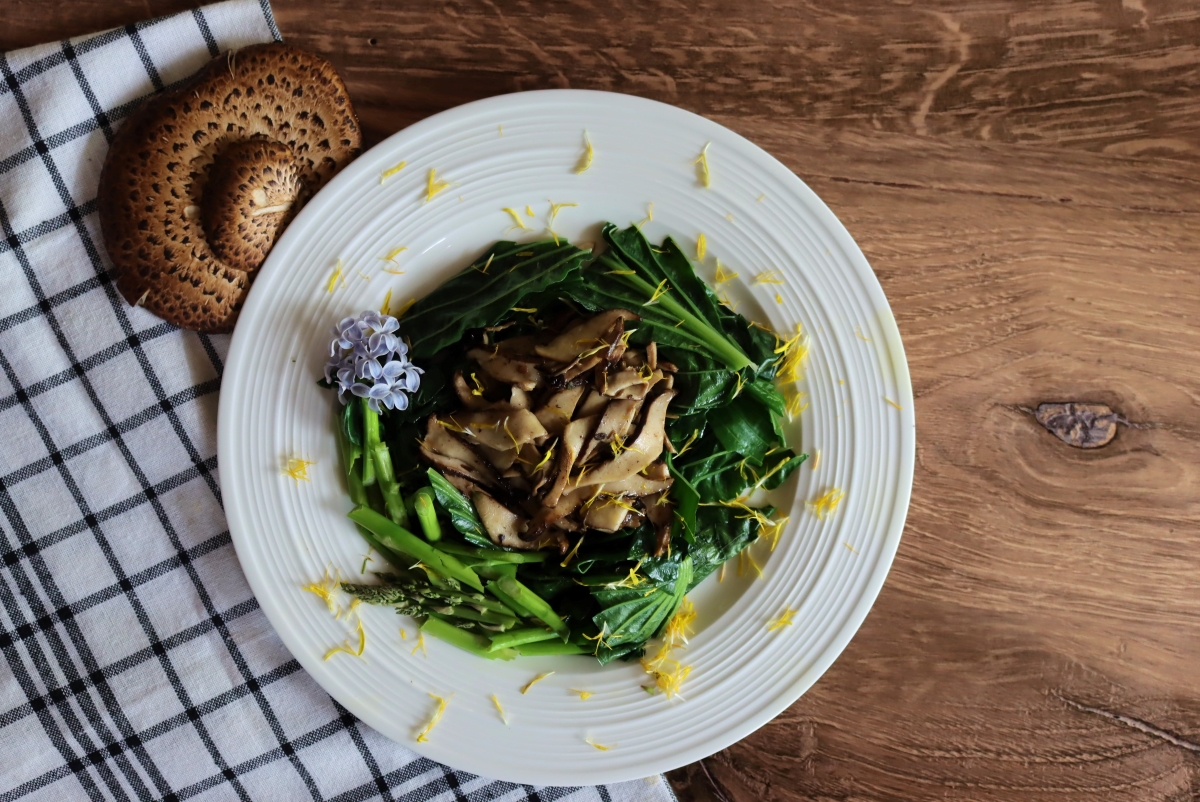
Chanterelle Mushrooms
We’re blessed in that our 30 acres of woods are positively covered in chanterelles, and in late summer the ground is spotted with their orange/gold caps.
They taste and smell like fresh apricots, and the aroma is absolutely unforgettable as you’re walking home with a full harvest basket.
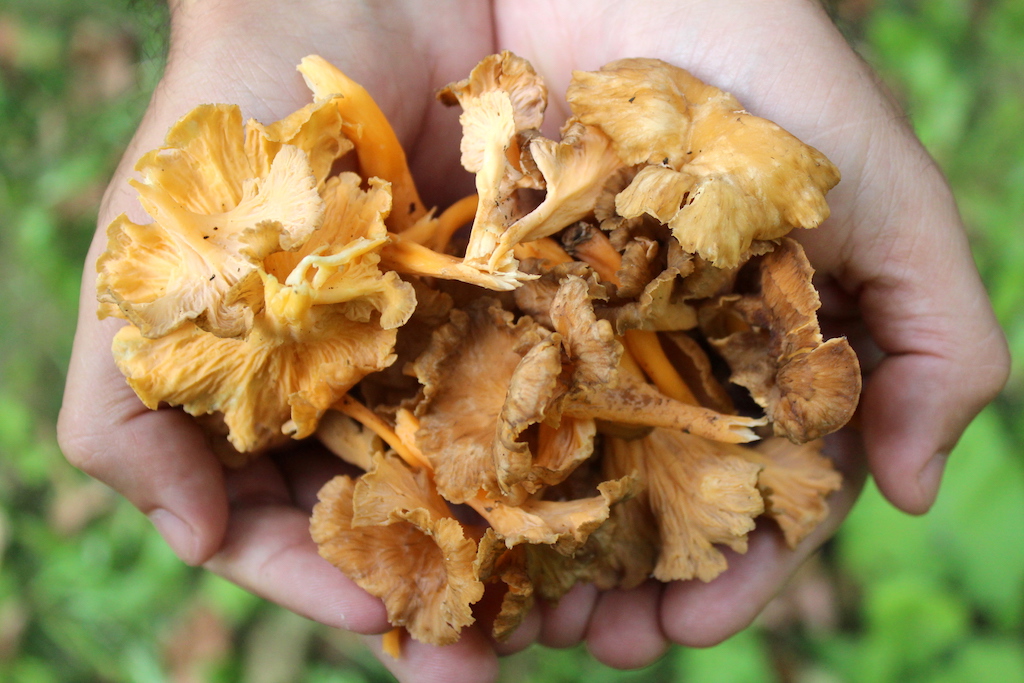
False chanterelles also grow in abundance, and they’re often found side by side. Since they’re right on our land, I often forage with my two young kids on summer afternoons (now 4 & 6).
With a bit of training, they know how to spot true chanterelles and leave behind all the look-alikes. That includes Jack-O-Lantern mushrooms, which are toxic but have very different gills and even my kids know how to test for that.
Beyond Jack-O-Lanterns, there are many other orange mushrooms in the woods at the same time. None of them look all that much like chanterelles, it’s still important to watch for them.
We’ve found bright orange amanita mushrooms right in the center of a dense patch of chanterelles. They’re not exactly toxic to the best of my knowledge, but they are one of those special mushrooms your mother warned you about, and not something I’m interested in harvesting.
(You can see it in the 2nd picture below, along with some other orange mushrooms in the woods at chanterelle harvest time.)
Chicken of the Woods (Laetiporus sp.)
One of the very easiest mushrooms to identify, nothing really looks like a chicken of the woods mushroom. Sure there are other orange mushrooms, notably chanterelles, and their look-alikes, but the distinctive shape and yellow pore surface are a dead giveaway.
The name chicken of the woods comes from their flavor, rather than their appearance. Chicken of the woods mushroom recipes generally take advantage of the unique flavor/texture of this mushroom that’s surprisingly like cooked chicken.

A mid-summer mushroom, chicken of the woods generally appears in August during the warmest part of the year. They’re pretty dependable, reappearing in the same locations year after year until they’ve completely decomposed a dead tree.
We found around 30 pounds of them on a dead log this past summer on our way hiking into one of our favorite hidden waterfall swimming spots here in Vermont. It was heavy to haul them out, but we had chicken for dinner!
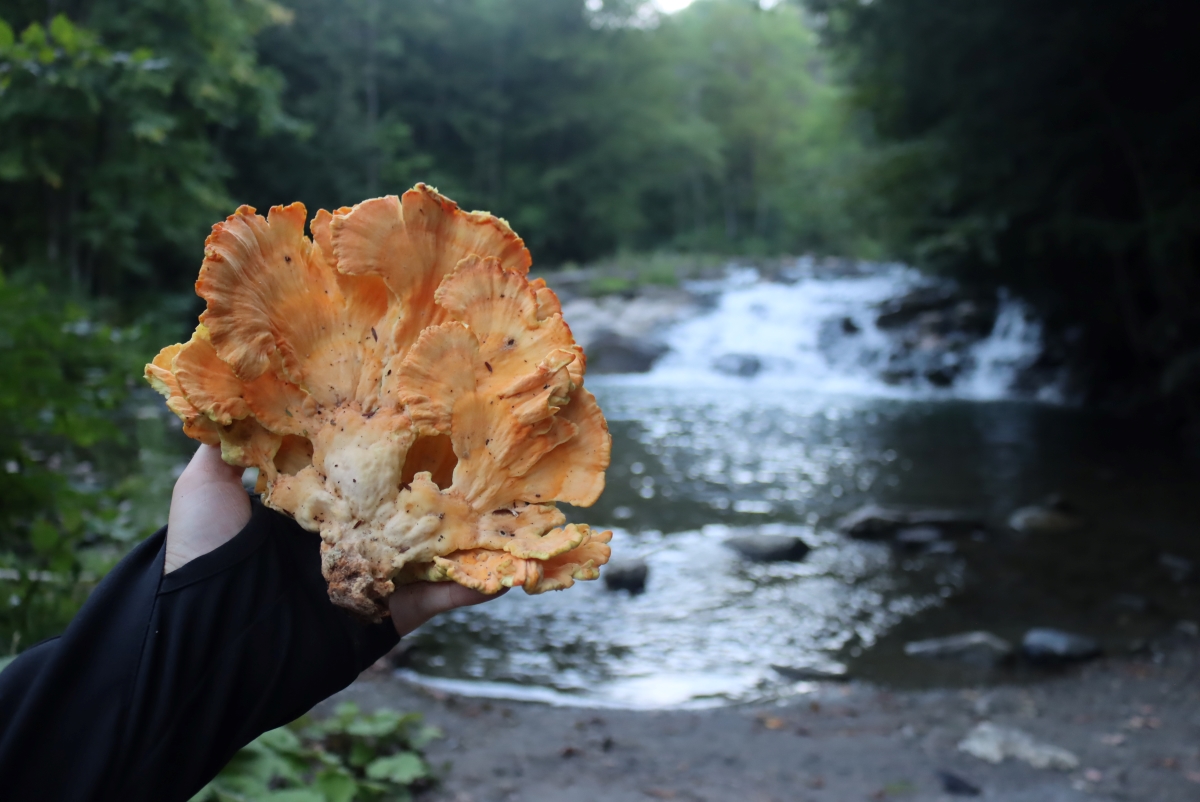
Hen of the Woods (Grifola frondosa)
Unlike chicken of the woods mushrooms which are named for their chicken-like taste, hen of the woods is named for its appearance. The frills of the mushrooms look like the tail of a hen, or at least the people who named them originally thought so.
They’re also edible, and you’d be lucky to find them because they’re much less common than the hen of the woods.
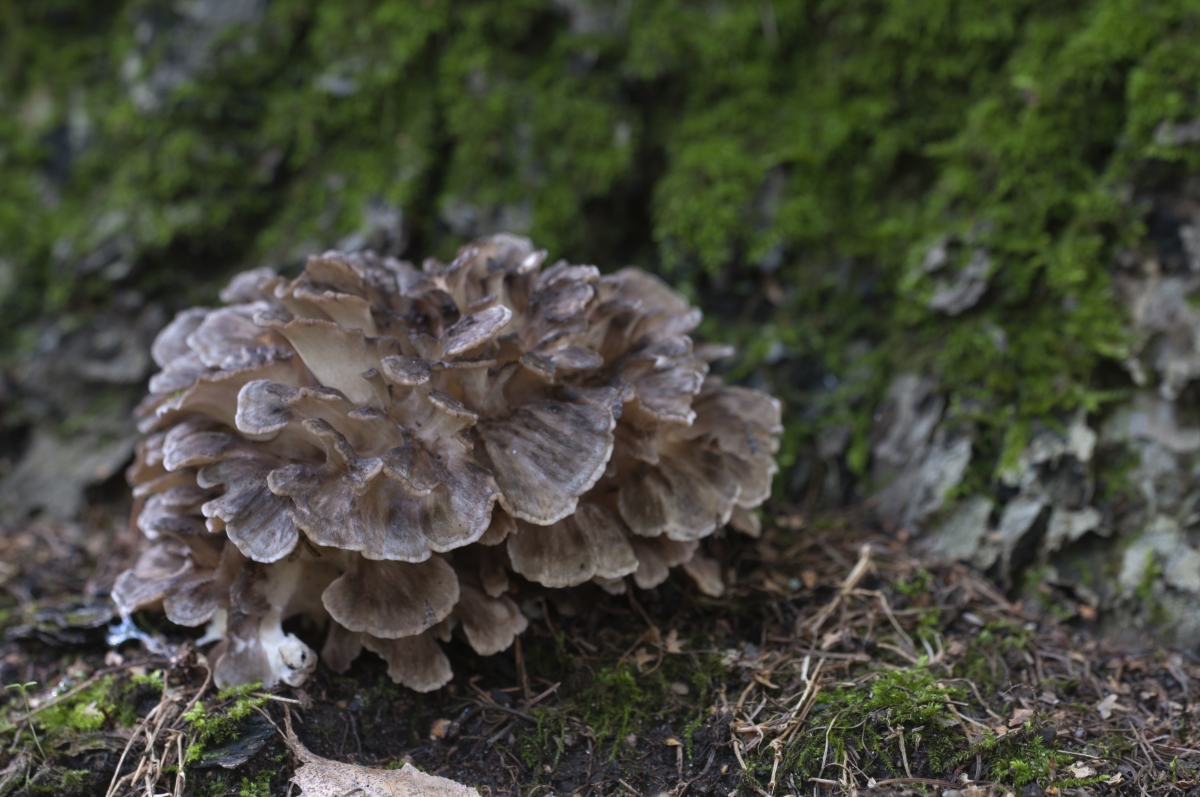
Puffball Mushrooms (Calvatia sp.)
Giant puffball mushrooms are incredibly easy to identify, as they’re well, more or less giant puffballs.
There are a number of other puffballs as well, and most of them are easy to identify as well.
There are a few toxic look-alikes, but positively identifying puffball mushrooms is easy enough if you know what to look for.
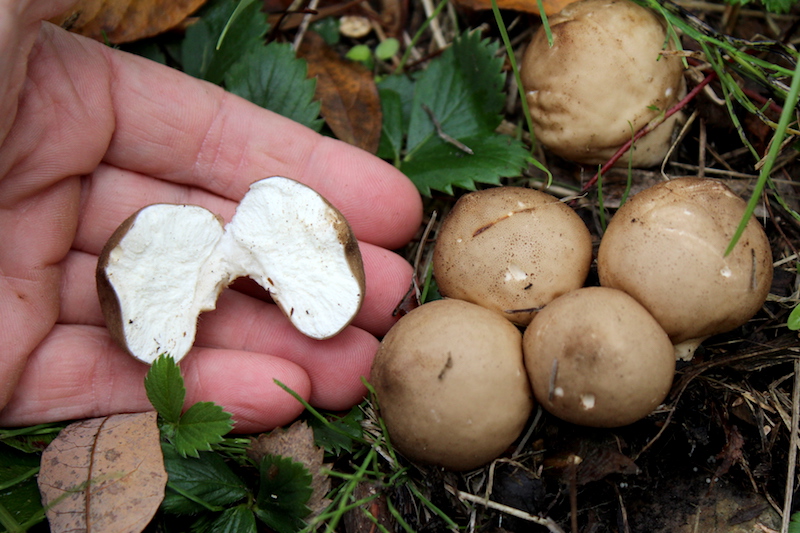
Shaggy Mane Mushrooms (Coprinus comatus)
I’ll be honest, shaggy mane mushrooms aren’t the tastiest specimens out there, but they are incredibly common. They grow in compacted soil and are often found along walking paths in lawns and roadsides.
Identifying shaggy mane mushrooms is relatively easy, though they do have a few look-alikes.
The mushrooms put off an inky black dye during cooking, so they add unique color to dishes even if their flavor isn’t out of this world.
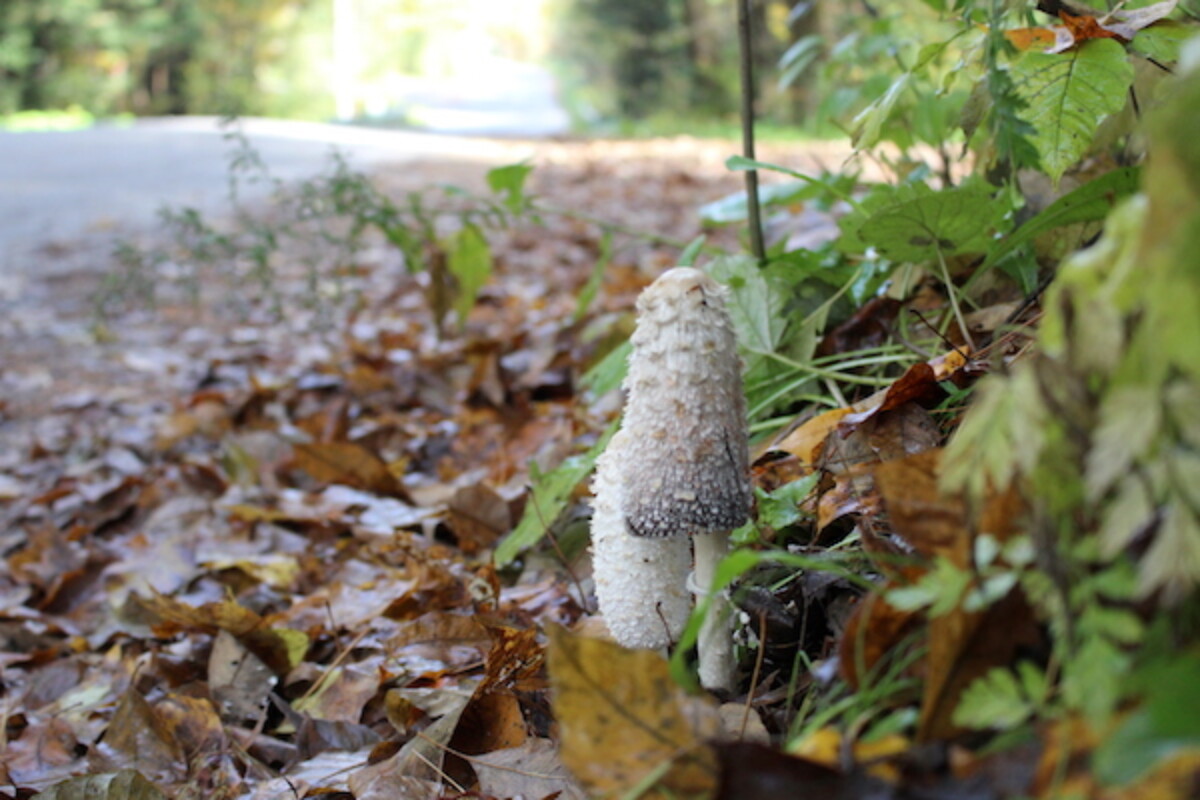
Lion’s Mane Mushrooms (Hericium sp.)
Named for their shaggy appearance, lion’s mane mushrooms actually taste like seafood! They make excellent risotto, and they’re wonderful fried in panko as well.
Lion’s Mane Mushrooms are really easy to identify, with no close look-alikes.
As a bonus, they also happen to be a potent medicinal mushroom too!

Bolete Mushrooms (Boletus sp.)
Also known as porcini mushrooms, bolete are a large group of mushrooms that all have similar characteristics. I’ll admit I’m no expert on boulettes, and though I’ll occasionally see them in the woods, I don’t seem to find them in mass as others seem to.
There are many species, the most popular of which is the King Boletes.

Hedgehog Mushrooms (Hydnum repandum)
Sometimes called sweet tooth, hedgehog mushrooms are a real treat in from the woods.
They’re similar to chanterelles in some ways, and another local forager here in Vermont calls them “the safer chanterelle.” He notes that:
“The hedgehog, or sweet tooth, is perhaps the most foolproof to identify of all wild mushrooms. Its yellow to orange cap and fruity odor are reminiscent of its summer-fruiting relative the golden chanterelle, but its tooth-covered underside distinguishes it from potential look-alikes. Beginning foragers often confuse the chanterelle for the poisonous jack-o’-lantern, which has free, parallel gills as opposed to attached, forked gills. Distinguishing between different gill types can be daunting for novices, but it is far easier to tell teeth from gills.”
The teeth on the underside are one of the easiest ways to spot aptly named hedgehog mushrooms.
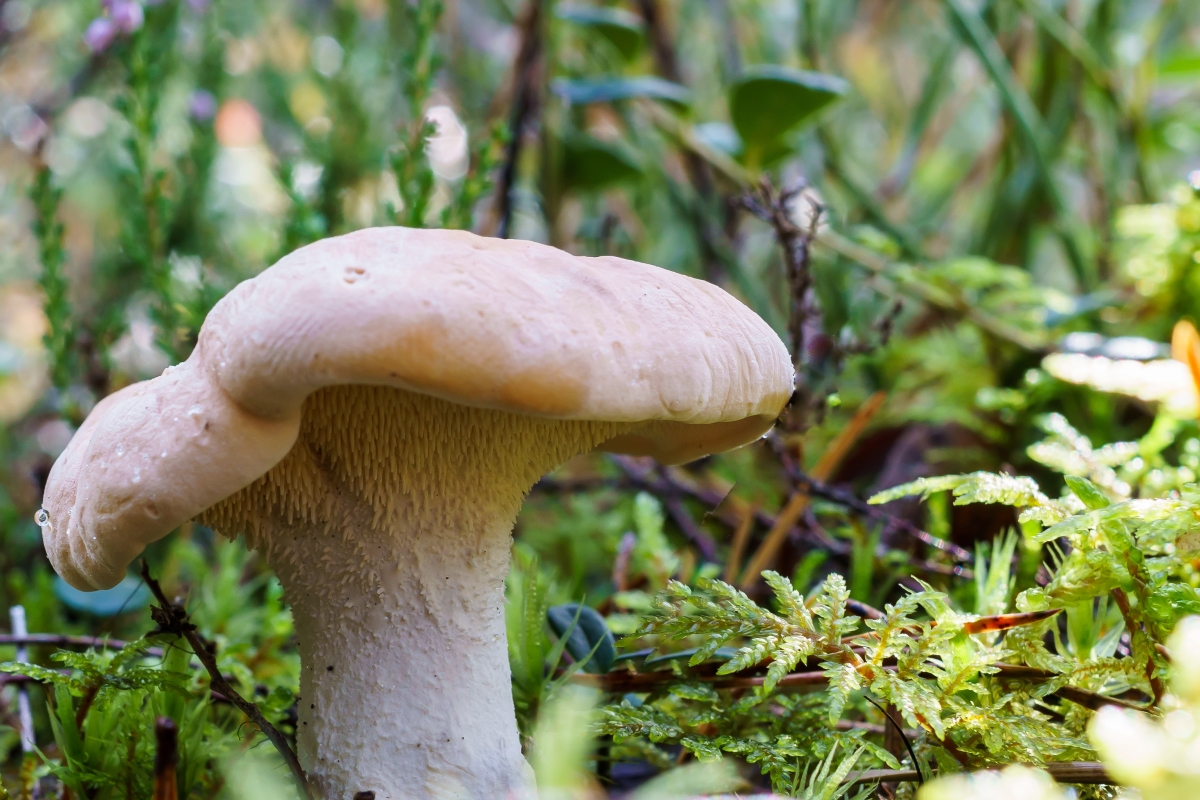
Oyster Mushrooms (Pleurotus sp.)
As a general rule mushrooms with gills are hard to identify, and not for beginning foragers. Oyster mushrooms are an exception, and they’re both common and relatively easy to identify.
Personally, I’m not a fan of oyster mushrooms, so I leave them be when I pass them in the woods, but others seem to love these. They sell for good money in the store, so if you’re a fan it’s worth it to seek them out in the woods.
There are a number of species, and they spread across a long season. The “winter oysters” pictured below were found growing out of a woodpile in late October here in Vermont, later than most edible species.
Here’s where you can find information on foraging oyster mushrooms.
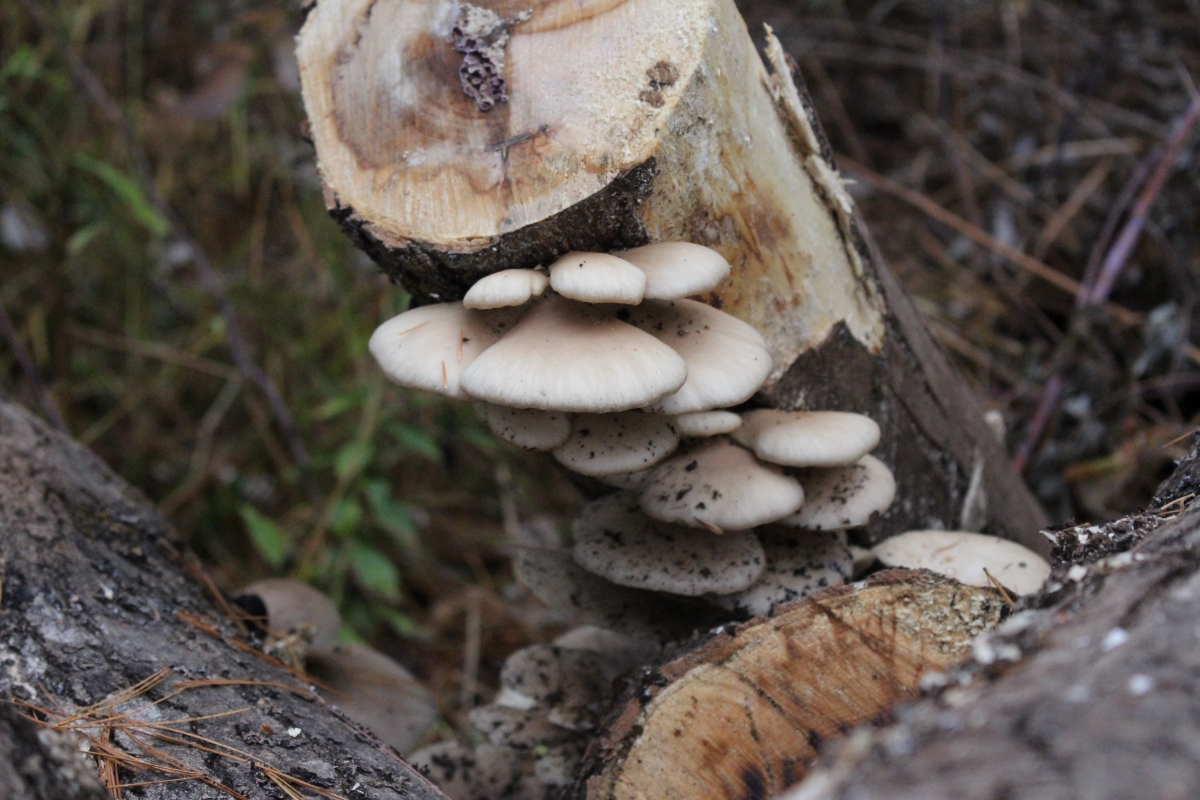
Lobster Mushrooms (Hypomyces lactifluorum)
I know, they’re not technically a mushroom, but that’s really splitting hairs. “Lobster mushrooms” aren’t true mushrooms, but are actually a parasite that infects specific mushrooms.
The results are delicious, and you are still in fact eating a mushroom, it’s just one that happens to host a tasty lobster parasite.
Their bright coloration and distinctive shape make lobster mushrooms easy to identify.
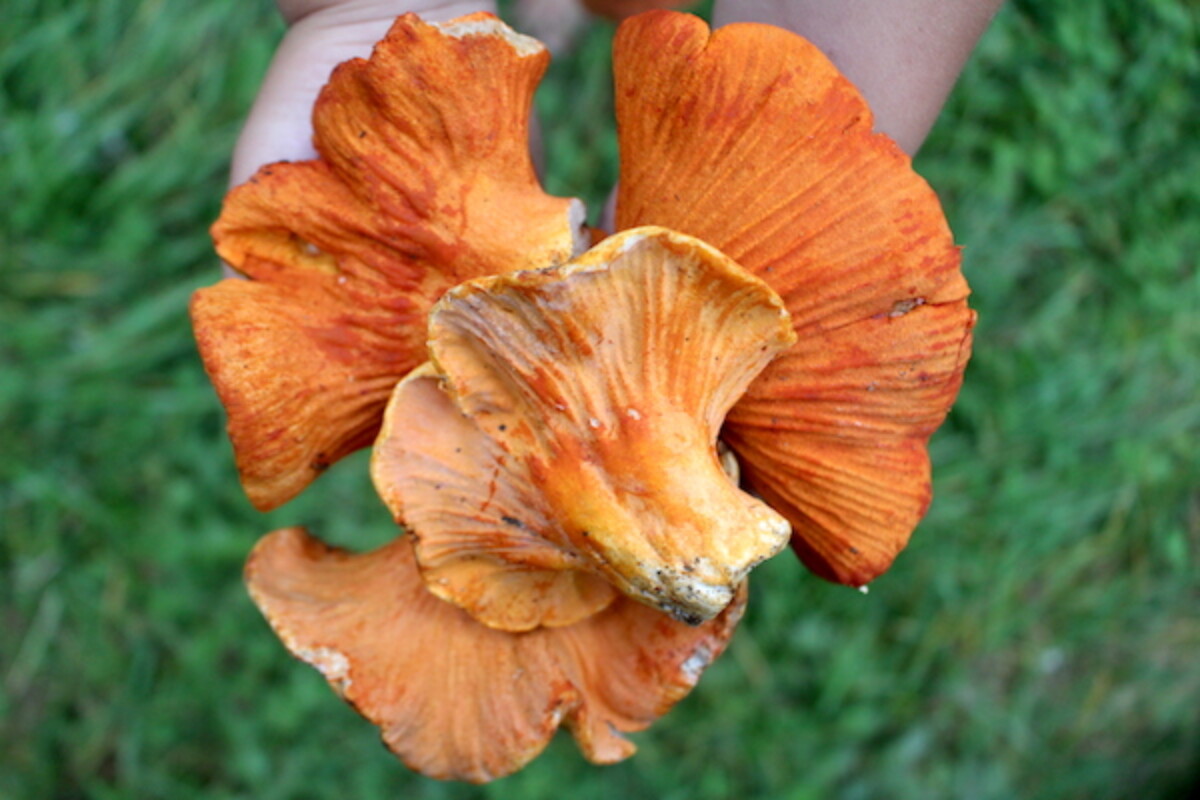
Winecap Mushrooms (Stropharia rugosoannulata)
These commonly cultivated mushrooms are incredibly easy to grow, and they often escape cultivation into the wild. They grow on almost anything as decomposers, and they’re common in wood chip piles, straw bales, and bark mulch around perennial beds.
Once we started growing wine cap mushrooms I saw them everywhere. Getting a bit of sawdust spawn and inoculating some mulch on a perennial bed is one of the easiest ways to start a patch, and once you’ve seen them growing you’ll notice them all over town.
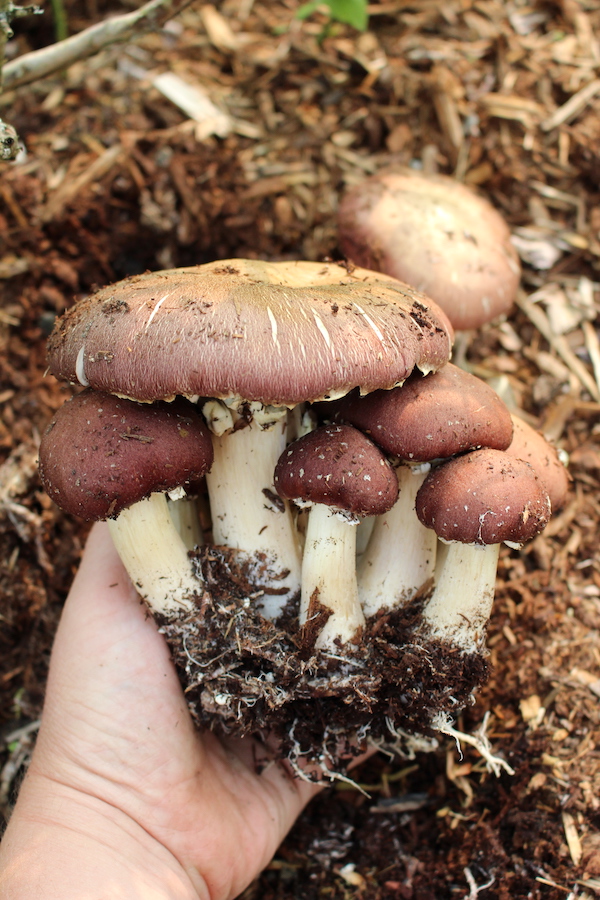
Witches Butter
Often considered more of a medicinal or survival mushroom, witches butter is in fact an edible mushroom that’s easy to identify.
It grows year-round, even thriving in sub-zero temperatures. It tends to pop up repeatedly in decomposing wood after rain or snowstorms.
They don’t really taste like much, but they’re sometimes fried or added to soups.
Medicinally, they’re used for respiratory conditions.
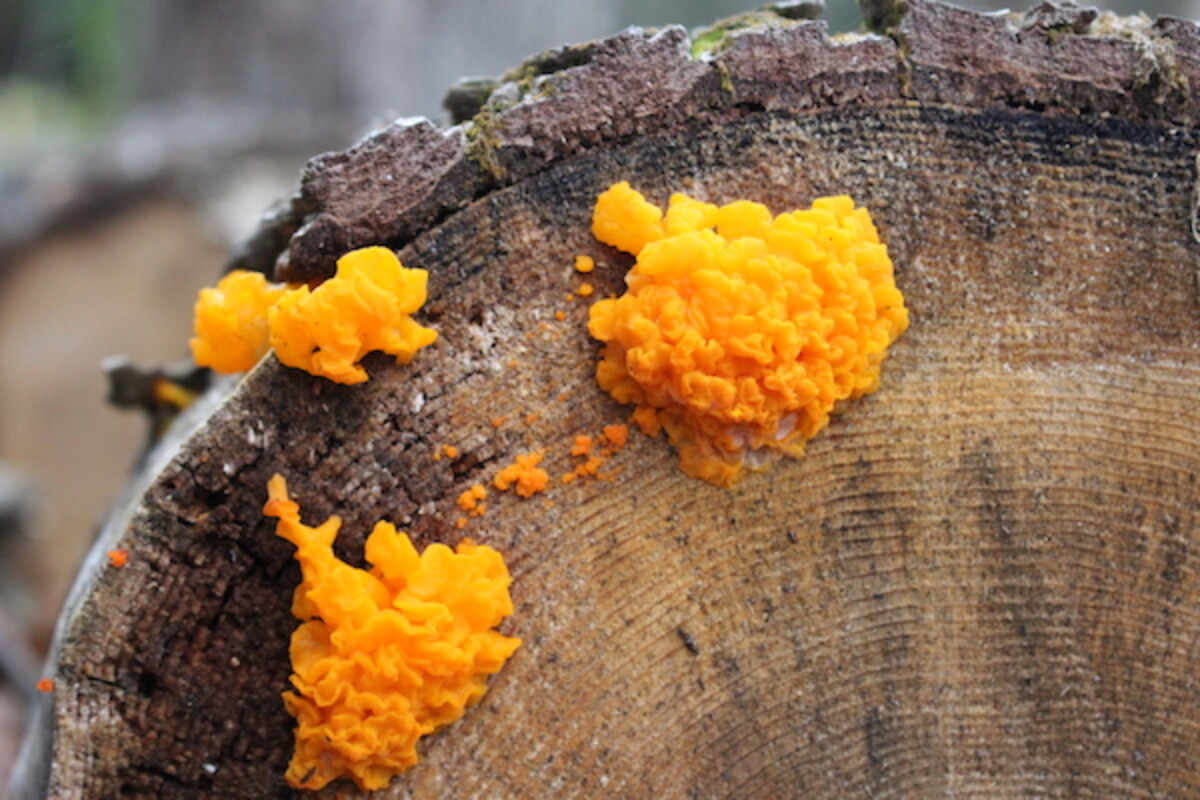
Medicinal Mushrooms
Beyond easy to identify edible mushrooms, there are a number of medicinal mushrooms that are perfect for beginners.
While they might not make a good risotto, their potent medicinal properties make them worth foraging to make into tea, tincture, and other remedies.
Foraging Guides
Looking for more foraging guides?
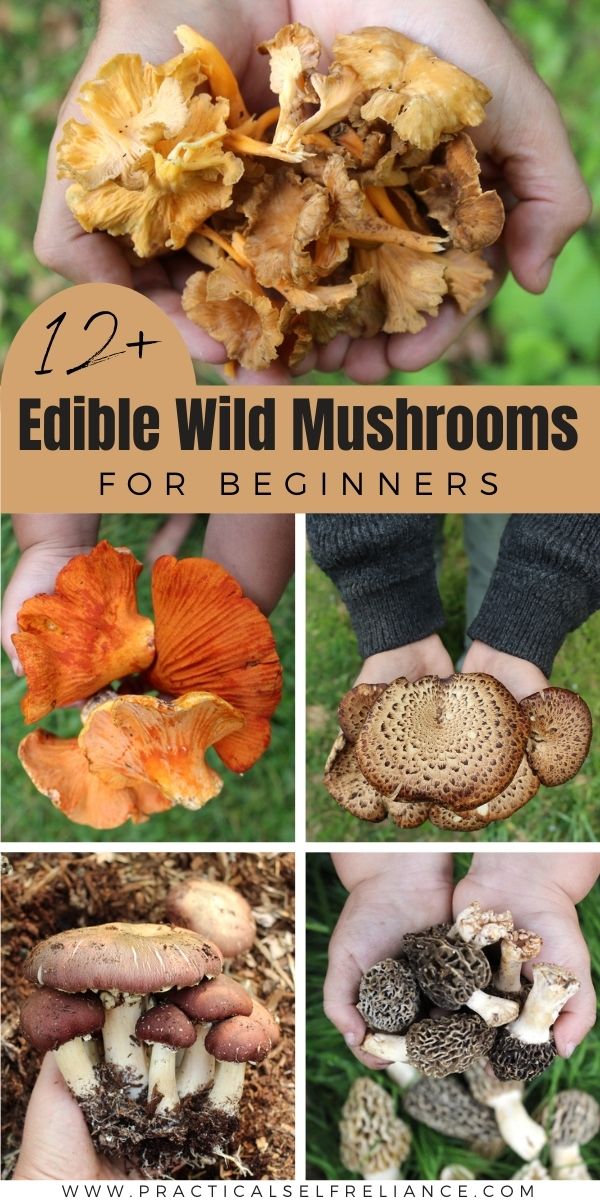
Disclaimer: Every year people are poisoned by eating wild mushrooms that closely resemble edible species. Although mushroom poisonings are rare in the grand scheme of things, be aware that you are responsible for proper identification AND consulting multiple sources for your identification.
I am not a mushroom expert, nor do I claim to be. I’ve written this based on my own research because I enjoy sharing the fruits of my own mycological journey with others. Do not rely solely on my writings to identify mushroom types, and be sure to cross-reference anything mushroom-related with at least two (preferably more) credible sources.
Finding a qualified local guide is one of the best ways to learn to forage mushrooms, but failing that, this online mushroom course is an incredible resource for beginners and beyond. It’ll teach you the fundamentals of identification that are essential for both beginning mushroom hunting and more advanced mushroom identification.

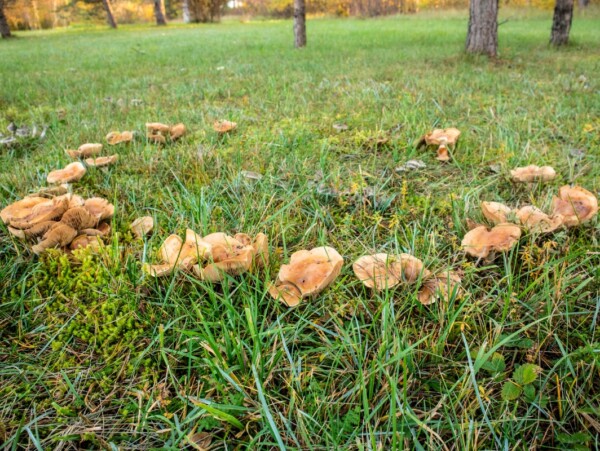
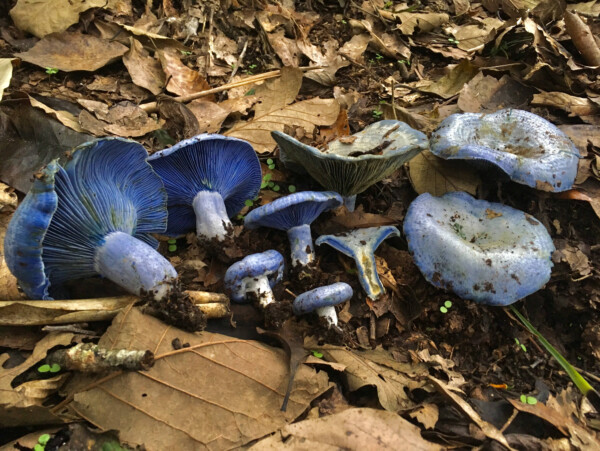
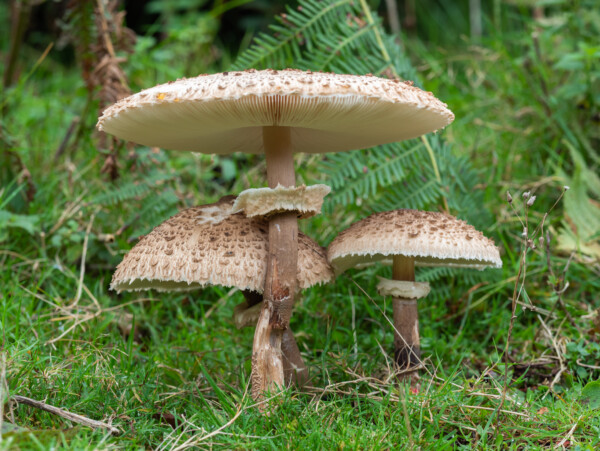










Do you have a book on mushrooms, or any other wild edibles that I might purchase. I would love to support all the work you do.
Thanks so much for your support but we don’t have any books available at this time.
My county in Pennsylvania is the mushroom capital of the world but lately I don’t see wild mushrooms. I think after buying so much mushroom soil we got tired of them popping up where we didn’t want them. But we have a good variety of exotic mushrooms grown here. I’ve had some delicious dishes with mushrooms and created a few of my own.
Ashley,
Please read up on the only Shaggy Mane look alike called… THE VOMITER. Do it ASAP!! Serious error to correct in what’s stated in your information on this site.
You wrote “(Shaggy Manes) …have only one common look-alike,which is also edible, reducing the worry of harvesting the wrong species.” WHOZA!!
Thank you for sharing that. I did do some research on this particular mushroom and I did read that it is commonly confused with the shaggy mane but honestly I am not sure how. They seem to have a totally different shape. Do you have some additional resources on this?
Very good article! We have foraged for all but only get half of what you have. Morels and C O W are I believe non existent up north here☹️. The one we have discovered just this year, picking a few pounds every time we went out right up to October 28 is the black trumpet. Oh so good right up there with chantrells. A very great year all around. Photos I have.
Hi Ashley,
I live in Highgate, VT. I have been picking calvatia Gigantea, giant puffball, for the past month.
I welcome you to visit and pick a choice one from our property. I have been having various meals
from them.
That’s very kind of you.
Thank you, Ashley. I visited the area of the woods today and there is only one large one that has not yet begun to spore. I had read on your website that after many years of foraging you had not seen one in the wild. I was simply offering an opportunity to pick one for yourself.
The offer to forage here is unending. The spore-
formers do have their own schedule!
Hey Steve, Thanks so much for the offer! I really would love to see them, but we’re pretty far from Hygate and with little ones it’s just too long a trip. If you were closer, I’d totally take you up on it and actually just pop right over. I’m sure I’ll run across them down here sooner or later, they’re supposed to be incredibly common and are obviously hard to miss.